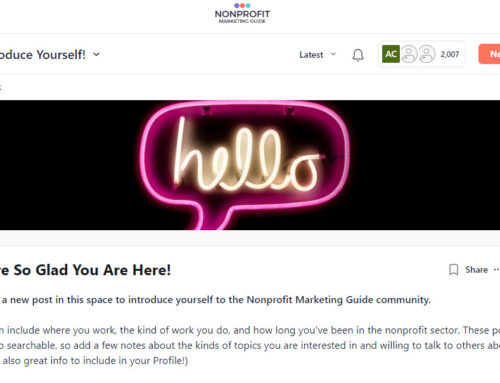
I get into strategic planning and productivity mode twice a year: once in December/January and again in June/July. That means I’m reading and thinking a ton about what we do at Nonprofit Marketing Guide and about my own personal productivity.
One of the books I’m working my way through is How to be a Productivity Ninja: Worry Less, Achieve More and Love What You Do (Amazon). I’ve read a lot of productivity and time management books over the years, and in most cases, I pull out a nugget or two of information and move on.
This one is different — it makes so much more sense given the way that I work and think. Sure, many of the concepts I’ve already implemented and have for some time (like the idea of the “second brain” where you store information, to-dos, calendar items, etc. online instead of relying on memory).
But some of the concepts are new to me and really resonating, like the idea of separating your “boss self” from your “worker self.” In other words, according to the author Graham Allcott, it’s important to separate the “thinking work” from the “doing work.”
From the book . . .
“In any knowledge work job, you’re really playing two roles at one: you’re simultaneously the boss and the worker. You’re responsible for
- Deciding what your work is (boss-mode)
- Doing the work (worker-mode)
- Dealing with new information inputs (worker-mode) and reacting to them to decide whether to change your priorities as a result (boss-mode)
Since most people do not have specific definitions or boundaries around what is boss-mode and what is worker-mode for them, they get stressed about whether they’ve made good decisions and often procrastinate as a result — not having good boundaries or habits here means never finishing boss-mode thinking and never quite being sure when in worker-mode that you’re actually doing the right stuff.”
Sound familiar? It sure did for me!
The solution is not “time management” but rather “attention management” and to actively “separate thinking from doing, and boss from worker.”
The book describes a detailed process for doing that called CORD: (C) Capture and collect, (O) Organize, (R) Review, and (D) Do.
Can you guess which part of you does what?
- Capture and Collect — Worker Mode
- Organize — Boss Mode
- Review — Boss Mode
- Do — Worker Mode
The book goes on to explain more about how you separate the two and how to set up systems to reinforce the CORD method. I’ve been working through tweaks to my current system to make it more CORD-like, and am already seeing very clear benefits.
Bonus: Regularly getting to Inbox Zero is part of the system. Loving that!
I’m sharing this with you because I know so many communications directors struggle with this same balance of making good decisions (boss-mode) and producing good communications pieces (worker-mode), and I know you look to Nonprofit Marketing Guide for help with both!
If you decide to check out the book, let me know what you think. Did it resonate with you? How can you apply the concepts to your nonprofit marketing work?






